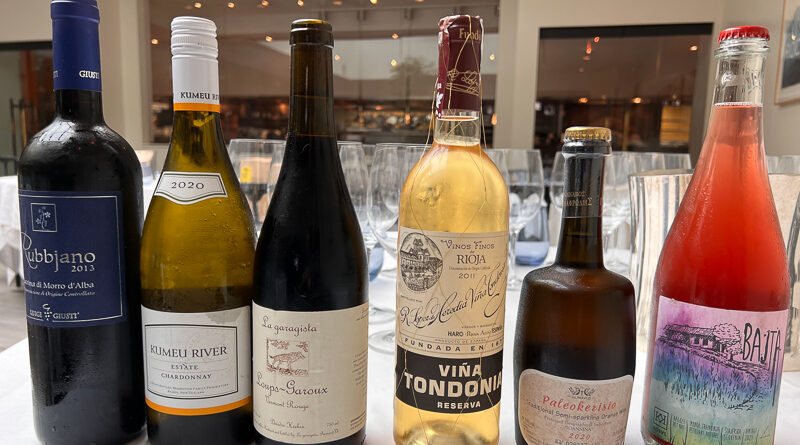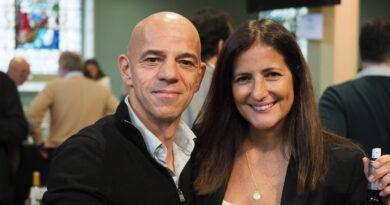Wines on the edge, imperfectly perfect – a seminar and tasting looking at wine faults
A few weeks ago I visited California, presenting a seminar titled Wines on the Edge in Los Angeles and San Francisco. Organized by the Wine Education Council with support from the Veritas Fund, this was a presentation on wine faults based on my Flawless book, and the discussion centers on the issue of what constitutes a wine fault, and the nature of beauty in the context of winemaking. During the seminar, we tasted six wines, with a view to using these as a way of trying to get some clarity on these questions. To some, these wines might be considered faulty, while to others, they are beautiful. Some are more obviously contentious than others. Here are my notes.
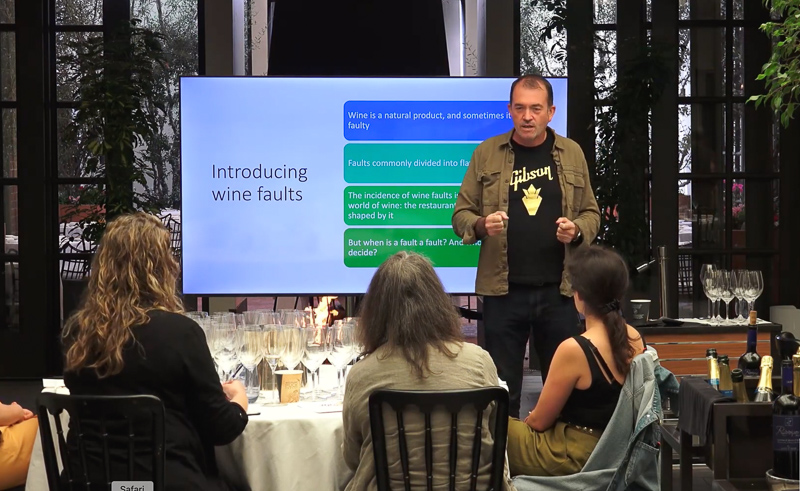
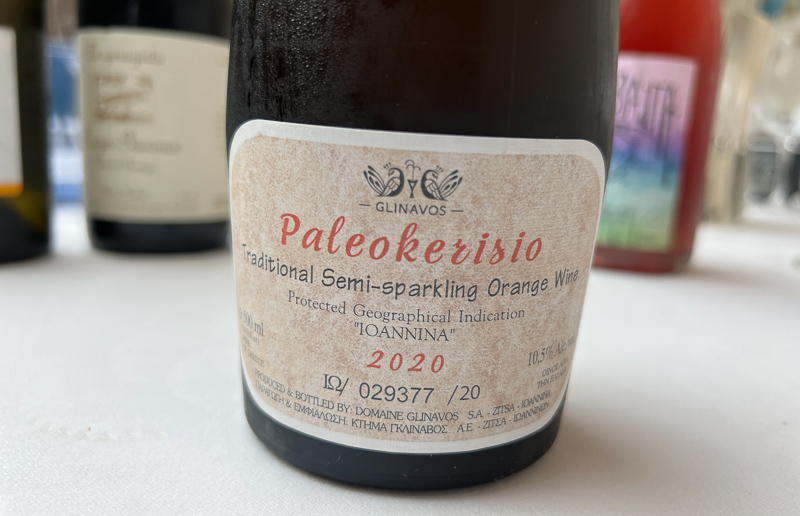
Domaine Glinavos Paleokerisio Semi-Sparkling Orange Wine 2020 loannina, Greece
After studying in Bordeaux, Lefteris Glinavos returned to his native Zitsa, Greece to found this domaine. His goal was to showcase native varieties and their unique styles. This slightly sweet natural sparkling wine is almost cider-like. A blend of 97% Debina and 3% Vlahiko, this wine spends 12 days on skins and is then carbonated in tank.
10.5% alcohol. Full golden colour. This is really beautiful, in an odd way. It’s powerful and fizzy, with an earthy edge to the orange peel and pear fruit, and then a soft, buscuitty, with tangy acidity. There was a question as to whether this wine might be showing some mousiness, which has been a feature of previous vintages. But it’s really in that in between zone, and the local agent reports that this stuff flies off the shelves. 88/100
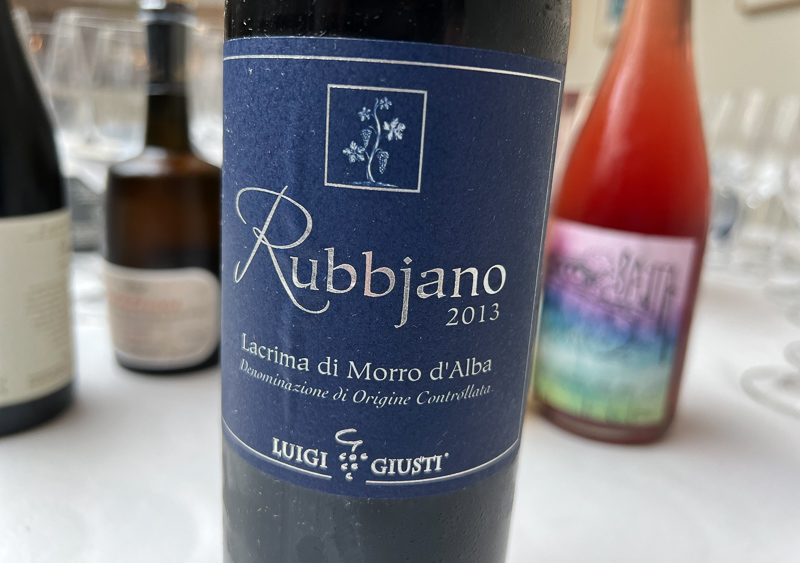
Luigi Giusti Rubbjano 2013 Marche, Italy
Luigi Giusti began growing grapes in 1965 in the Marche, focusing on unique native varieties that are extremely terroir expressive. This wine is 100% Lacrima di Moro d’Alba, a grape so ancient that its origins are still a mystery. Grapes are gently pressed and undergo a slow maceration, followed by fermentation in stainless steel. A post-fermentation soak for 10 days follows. The wine is aged for 10 months in small French oak barrels plus six months in the bottle.
Intense, vivid and bright with juicy raspberry and blackberry fruit, with keen acidity. But there’s also a dark, savoury side to it with earth and spice, and a tangy, almost metallic finish. A real food wine! The question asked here was whether or not this wine was showing Brettanomyces. 91/100
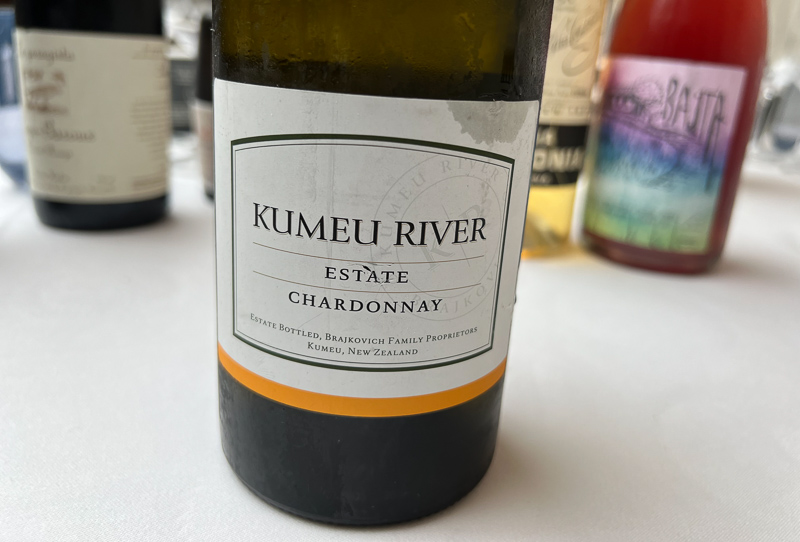
Kumeu River Estate Chardonnay 2020 Kumeu, New Zealand
Kumeu River was one of the first producers in Auckland to garner acclaim for their high-quality, world-class wines. This estate was founded in 1944 and has consistently received accolades both domestically and internationally. Grapes are hand harvested, whole bunch pressed, and oxygen contact is avoided at every step.
This is taut and mineral with lovely precision to the sweet citrus fruit, with hints of meal and spice, and just a touch of matchstick/mineral reduction helping to frame the fruit. There’s good acidity and precision, and a balance between the ripe fruit and the mineral character. In a beautiful place now. For me this is good reduction, and I think everyone agreed that this wasn’t a faulty wine. 94/100
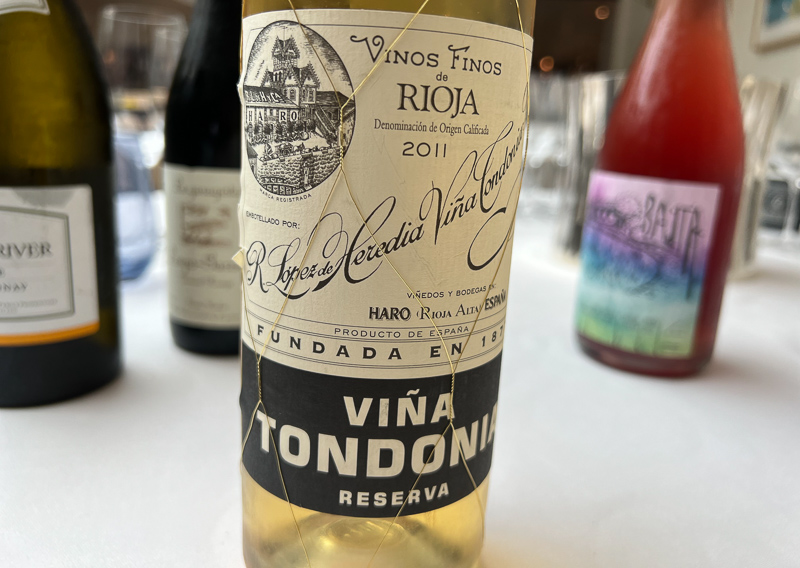
Lopez de Heredia Viña Tondonia Blanco 2011 Rioja, Spain
One of the most lauded traditionalist producers of Rioja, Lopez de Heredia is known for their single vineyard wines and long-aging white wines. The Tondonia Blanco is frequently viewed as a white wine with the heart of a red: full-bodied, complex, and ageworthy. The oxidative winemaking ensures this wine can age for decades.
90% Viura, 10% Malvasia. Complex and powerful, with keen acidity and good structure. Notes of honey, old furniture and marmalade as well as crystalline citrus fruit. Nutty and intense, and quite bracing, finishing with an explosion of citrus. Lots of potential for the future. Some technically inclined people would struggle with the oxidative notes, but this wine is quite expensive and sells out in a flash, so most people seem to love it. 95/100
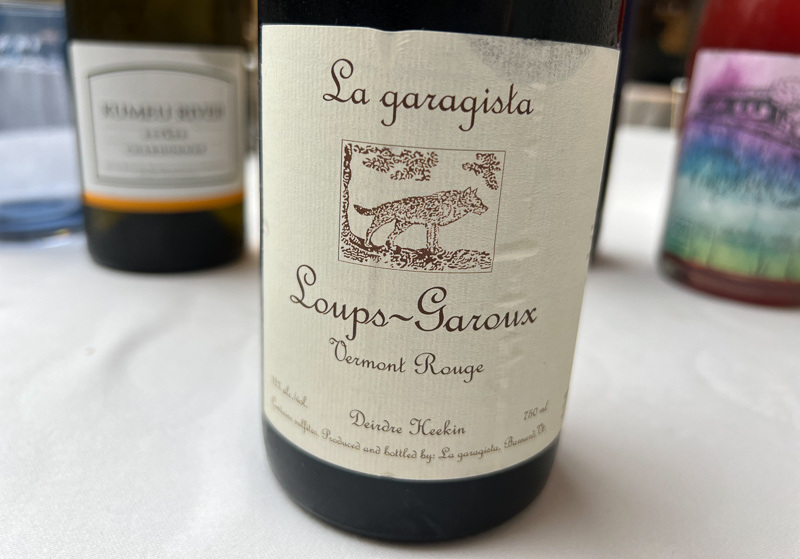
La Garagista Loups-Garoux 2018 Vermont
Restaurateurs-turned-vignerons Dierdre Heekin and Caleb Barber founded La Garagista with the intent to demonstrate Vermont’s promising place in the US wine industry. La Garagista is a pioneer of minimal intervention winemaking and biodynamic farming in Vermont. The Loups-Garoux is 100% Frontenac Noir produced in the style of a Valpolicella Ripasso.
This is intense, vivid, savoury and a bit earthy: it has bright raspberry and cherry fruit with a touch of blackcurrant bud, as well as a bit of acid lift. It works, but it has a savoury dimension that is quite overt, and some might object to the volatile acidity (present but not pronounced) and the oxidative characters. A really distinctive wine. 91/100
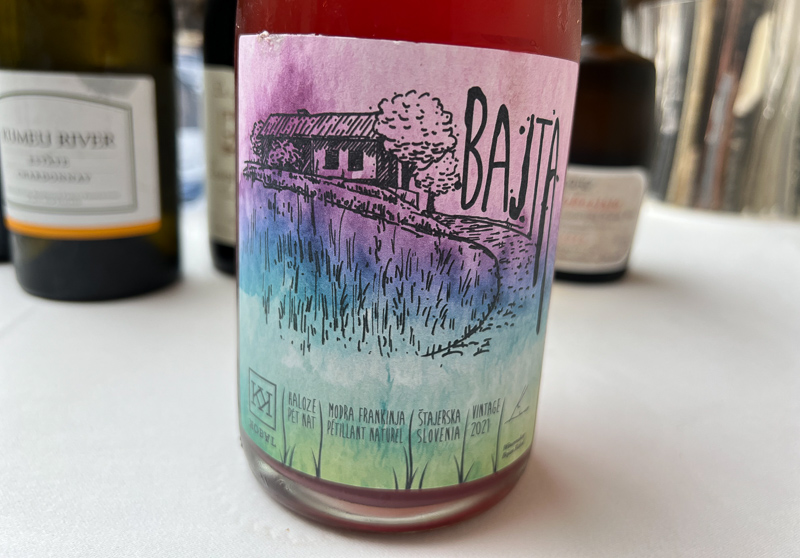
Kobal Baita Rosé Pét-Nat 2021 Podravje, Slovenia
Steep slopes, marl soils, and an ancient winegrowing history make Kobal’s vineyards fascinating. This 100% Blaufrankisch wine is produced via the methode ancestrale. Unfiltered and unfined, it offers a yeasty, cloudy appearance and textured mouthfeel.
Cloudy pale pink/red in colour. This is pure, juicy and bright with vivid cherry and plum fruit, and a bit of bite. So expressive and juicy, with massive drinkability but also nicely structured with a full mouthfeel. Very stylish. I thought this was very clean and the cloudiness didn’t detract – it was a good starting point for discussions of the Pét-Nat category, which can vary wildly. 93/100
This is a film of the presentation I gave at Spago in Beverley Hills:

